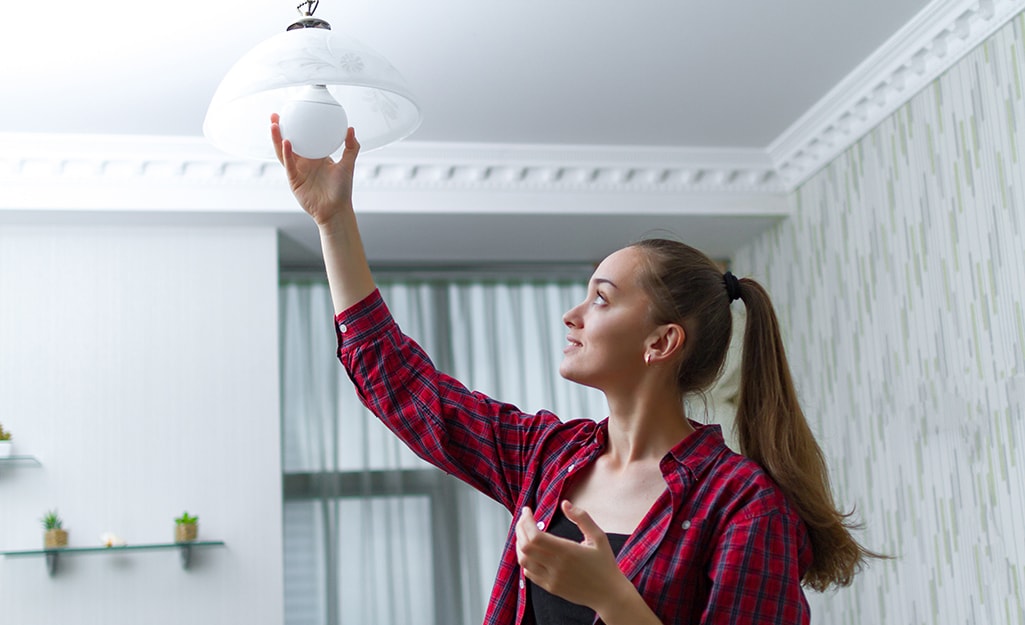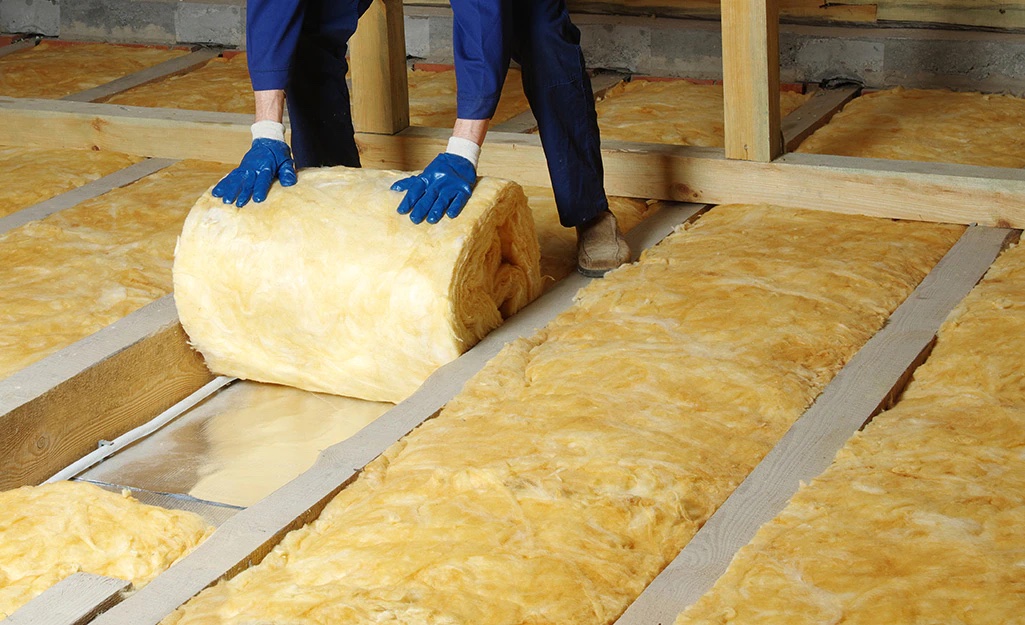Inspiration Guide
How to Make a Home More Sustainable
We all want to practice more sustainable living at home and try to reduce our carbon footprint. And the reasons are clear. Greenhouse gas emissions like CO2 have increased by 90 percent since the 1970s, according to the Environmental Protection Agency. Half of the world’s greenhouse gas emissions are from electricity and heat production, agriculture and deforestation. This trend won’t slow unless we all make an effort to reduce our carbon footprint. Fortunately, there are simple actions that can make a big impact.
So, what can we do today, tomorrow and in the future for a positive environmental impact? Practice these sustainable living tips, and make your home an eco friendly haven. From money saving fast fixes to building green from the ground up, we’ve got sustainable lifestyle tips for everyone.
What Makes a House Environmentally Sustainable?

A sustainable house uses natural resources efficiently and reduces energy consumption. The goal of a sustainable home is to have the least possible negative impact on your environment by conserving water, using renewable resources like wind and solar, and reducing the amount of fossil-fuel energy you consume.
How do you know if your house is environmentally sustainable? The U.S.Department of Energy has a national rating system called “The Home Energy Score” for new home construction. This rating system focuses on a home’s structure, heating, cooling and hot water systems. For an existing home, you can conduct a home energy assessment, sometimes called an energy audit, to measure your current household gas and electricity use and determine the best ways to cut energy consumption and costs.
Easy Fixes to Make Your Current Home More Sustainable

Getting started making your home environmentally sustainable is as easy as changing your lightbulbs or purchasing a programmable thermostat. The kitchen is one of the most natural places to start green living. Upgrade your kitchen appliances to ENERGY STAR® -approved models to instantly increase your home’s energy efficiency. Countless sustainable living tips can transform your home into a green space without extensive remodeling — or breaking the bank. Here are just a few ideas:
- If you have an attic, make sure it is adequately insulated to keep your home cooler in the summer and warmer in the winter.
- Weatherproof and insulate your home by caulking, sealing or placing weather stripping on exterior doors and windows to prevent air leaks.
- Install low-flow faucets and showerheads in your kitchen and bathroom to conserve water.
- Turn existing toilets into low-flow toilets with a conversion kit, or install a new water saving model.
- Hang thermal curtains on your windows for additional insulation to help keep your home cool in the summer and warm in the winter without touching the thermostat.
- Swap out regular light bulbs with an LED bulb. LED bulbs last considerably longer than regular bulbs and use less power.
- Update your thermostat to a programmable or smart thermostat. You’ll be able to adjust your temperature settings when you’re away, and some smart thermostats track your energy consumption so you stay on track.
- In addition to ENERGY STAR® kitchen appliances, purchase an ENERGY STAR® air conditioner or heater. There are ENERGY STAR® computer monitors and TVs for your home office or family room too.
- Consider a tankless water heater, which is up to 30 percent more energy efficient than a traditional natural gas water heater.
- Buy — or make — your own rain barrel to collect rainwater for your garden.
- Choose native plants that don’t require a lot of water for your landscaping.
The cost to update your home for sustainable living varies, depending on how much you want to convert. Even small changes, like using LED bulbs, can make a big impact. These investments reduce your heat, electricity, and water bills, so you’ll recoup your initial investment — and then some.
Sustainable Home Design Ideas

If you’re considering building a sustainable home, it’s never too early to start thinking about green living. An eco friendly home starts in the design stage. Passive building designs and renewable energy resources reduce your home’s carbon footprint from the start.
- Opt for a compact home design over a sprawling one. Reducing the surface area of your home reduces interior heat loss. A compact two-story home has a smaller environmental impact than a spread-out, single story house — even if the square footage is the same.
- The larger the house, the greater the energy consumption. If sustainable living is your goal, consider how much space your family needs — and keep the square footage in that range. Bonus: The smaller the house, the less time you’ll spend cleaning it.
- Consider the orientation of your new home. Maximize south-facing windows in colder climates to increase direct sunlight in the winter. This will help heat your home and reduce your reliance on artificial light. Plant a tree that loses its leaves in the winter on the south side of your house. It’ll block the sun from streaming into your home in the summer and allow light through in the winter.
- A larger roof overhang allows light into your home during the winter and — because the sun is at a higher angle — blocks sunlight in the summer.
- Use your roof to your advantage. Photovoltaic panels, also known as solar panels, absorb the sun’s renewable energy to power your home. A low-sloped roof will receive more direct sunlight, which could equal big savings on your energy bill. Heat your water with a solar hot water system installed on your roof.
- Research renewable energy sources to add to your home design. A small-scale wind turbine or micro-hydro system will allow you to generate electricity — hello sustainability!
Tip: Live in a warmer climate? Plant a tree or tall shrubs and bushes outside of west-facing windows to keep the hot sun at bay.
New Construction Tips for Building a Sustainable House

Building green means using renewable resources, which have a smaller impact on the environment than nonrenewable resources. If you’re building a sustainable home of your own from the ground up, work with your builder to reduce waste, use sustainable materials and recycle whenever possible. Building materials that’ll help you build a more sustainable house include:
- Local materials: If you can, purchase wood milled locally rather than ordering from across the country. See what locally made materials and products you have available near you for a smaller environmental impact.
- Recycled materials: Research recycled materials near you. Reclaimed wood, bricks and stone are popular and make your home unique. Use steel, drywall, plastic — and even roof shingles — made from recycled materials.
- Sustainable materials: Seek out builders who use sustainable, green materials like straw bale or bamboo. Avoid building materials like paint and adhesives high in volatile organic compounds (VOCs).
Building an eco friendly home doesn’t have to be a pipe dream. You can claim tax credits and rebates for energy efficient purchases, and federal programs help homeowners finance their energy saving upgrades. Budget-friendly options to consider when building a new sustainable home for energy savings include:
- Insulation: The better insulated your new home is, the less energy you’ll use, and the more money you’ll save.
- Triple-glazed windows: Installing triple-glazed windows in a new home is well worth the investment. The lower the U-value, the better the windows will keep heat in your home.
- Durability: Build your new construction to last. Durability is central to sustainability in the home. Build a house that is suitable for the environment and climate where you live, and protect your investment with proper maintenance.
Tip: In addition to paints and adhesives, look for low VOC primers, cleaners, polishers and sealers
Tips for Sustainable Living at Home

Not ready to start building a new eco friendly home? That’s okay! You can make lots of changes at home right now for increased sustainability.
- Use your own reusable bags when you shop. Most grocery stores will collect your old plastic bags you still have hanging around.
- Replace your HVAC filter every three months for maximum efficiency while using less power. No time to replace? Just give them a quick vacuuming.
- Set back your thermostat seven to 10 degrees for eight hours a day, and see an annual savings of 10 percent on your energy bill.
- Replace alkaline batteries with rechargeable batteries. Check with your local recycling facility to see if they accept old batteries — and really amp up your sustainability efforts!
- Wash full loads of laundry in cold water to save about 90 percent of the energy your washing machine uses — about $40 a year.
- Compost your kitchen waste. Buy a compost bin, or make your own to reduce your household waste and enjoy rich compost for the garden.
- Turn off the lights and fans when you leave a room. If you have smart bulbs installed, you can turn them off from your smartphone, no matter where you are.
Tip: Composting is even easier with a small kitchen compost bin. When it’s full, transfer the food waste to a larger bin outside.
One of the biggest benefits of sustainable living is a smaller annual energy bill. The average green home reduces its energy costs by 30 percent a year. Whether you’re new to green living or aiming for zero waste on a new construction project, The Home Depot is here to help you reach your goal fast with online orders. Stop by a store near you, or shop online 24 hours a day.
